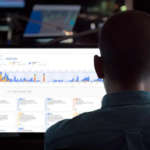This Valentine’s Day Don’t Let Cyber Attackers Break Your Digital Heart

Positive Technologies recently revealed the results of an analytical study into the key technology trends of 2024 and their projected impact on security. With Valentine’s Day approaching, their experts identified five key areas that are driving technological advances or “love interests” cybercriminals can’t wait to woo.
Artificial intelligence (AI)
AI remains a central theme in technology development and a key area of interest for cybercriminals. In 2024, AI was actively used by companies to improve business performance and improve user experience, but its popularity also opened up huge opportunities for attacks. Generative models have become a key tool for creating phishing schemes, modifying malicious code, and generating deepfakes.
Positive Technologies predicts that the use of AI in cyberattacks will increase in 2025: AI will be used more frequently in vulnerability scanning tools, data analysis, text recognition, and social engineering tactics.
Blockchain and digital assets
Blockchain continues to solidify its position in the financial sector, and cryptocurrencies are becoming increasingly popular. In 2024, more than 130 countries were developing their national digital currencies. Despite efforts to ensure the transparency and security of transactions, cyberthreats in this area remain inadequately addressed.
In 2025, attacks on cryptocurrency holders are expected to increase, with new ways to trick users. Scams to steal digital currencies will become more common, making it harder to protect funds. Fraud schemes involving digital currencies aimed at stealing funds will also become widespread.
Internet of Things (IoT)
The proliferation of IoT devices creates additional threats for both consumers and businesses. The study notes that poorly secured devices and vulnerable data protocols are becoming frequent targets for cybercriminals. Industrial IoT is also evolving, and security is particularly critical due to the potential impact on production processes and infrastructure. Along with the widespread adoption of consumer and industrial IoT, we are also seeing the rapid growth of smart city concepts. These interconnected systems leverage IoT, AI, and big data to manage transportation, utilities, and public spaces. By 2025, the number of attacks on consumer and commercial IoT systems is expected to increase significantly, affecting everything from individual homes to entire cities.
Cloud technologies
The transition to hybrid and multi-cloud infrastructures accelerates digital transformation, but it also complicates data security management. The study highlights an increase in incidents caused by configuration flaws and a lack of preventive measures.
The analysts predict that in 2025, cybercriminals will increasingly target cloud solutions for data theft and extortion. In September, Microsoft researchers reported an attack that compromised hybrid cloud environments. This campaign resulted in data exfiltration, persistent access to the affected infrastructure, and ransomware deployment. It targeted multiple sectors, including government, manufacturing, and transportation.
In addition, the growing complexity of cloud ecosystems and the need to provide data access to many users, including third-party organizations, increases the attack surface. In this regard, companies need to extend security measures to their suppliers and partners.
Autonomous vehicles
The digitalization of transportation systems is advancing rapidly: the market for autonomous vehicles will grow sixfold by 2032. At the same time, cyberattacks exploiting vulnerabilities in autopilots, sensors, and IoT gateways are on the rise. In 2024, malicious actors exploited vulnerabilities in autonomous vehicles to disorient systems, and these attack methods will continue to evolve. The industry is already responding to these challenges- with the growth of the global automotive cybersecurity market. These emerging solutions protect critical data and prevent unauthorized access, enhancing vehicle and passenger safety.
In today’s rapidly digitizing world, many industries are experiencing accelerated digital transformation, making tech companies increasingly targeted by malicious actors. As we move forward in 2025, software developers and IT companies are becoming primary targets of attacks.
“Throughout 2024, we observed the widespread distribution of malicious code via package managers such as npm, PyPi, as well as legitimate platforms like GitHub. The main targets of such attacks were software developers and IT companies. In 2025, the effects of software supply chain attacks will likely become more apparent. In attacks on IT companies, we may see a rise in successful incidents, with attackers using compromised developer credentials for initial access. Supply chain attacks continue to be an acute challenge. According to our review of incident investigations, the proportion of attacks where a compromised contractor’s network was used to gain initial access to a target organization has increased from isolated incidents (in 2021–2023) to 15% of all attacks in 2024,” said Ekaterina Snegireva, Senior Analyst at Positive Technologies.
Last Updated on 8 hours by News Desk 1













